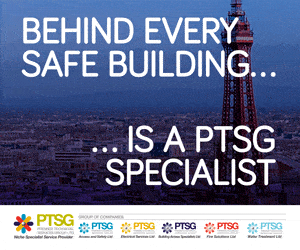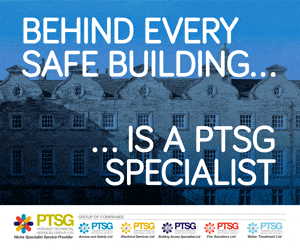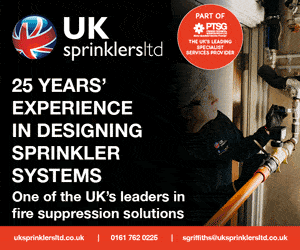Healthcare providers must balance tight budgets with the need to create supportive environments that enhance patient care. One frequently overlooked element that significantly contributes to patient and staff wellbeing is access to green spaces. Nigel Robinson, General Manager, Service Works Global, tells us more…
Studies have shown that patients who have views of nature recover more quickly after surgery and experience reduced levels of stress and anxiety. Another study found that patients in hospital rooms with a view of trees required less post-operative pain medication and had shorter stays than those looking at a wall. These findings underscore the immense value of green spaces in healthcare settings.
The Environment Agency has stated that the NHS could save an estimated £2.1 billion every year in treatment costs if everyone in England had access to good quality green space.
The value of green spaces in healthcare
Beyond patient benefits, green spaces have been shown to improve staff wellbeing. Healthcare staff face high levels of stress and often experience burnout, especially in demanding roles. Access to nature provides a respite, helping to lower stress levels, increase job satisfaction, and ultimately improve staff productivity.
These positive effects have evident knock-on benefits for healthcare systems, potentially reducing absenteeism and supporting more engaged, resilient teams.
The benefits are clear. The challenge for NHS estate teams is maintaining these spaces efficiently, especially within the constraints of the NHS’s nearly £30 million annual grounds maintenance budget.
It requires a strategic approach and, increasingly, technological support.
Efficient maintenance with space management software
There are two main challenges with NHS outdoor grounds maintenance. The first is labelling and identification of what’s there from surface assets such as tress, fences and sheds to underground pipes. 2D plans and space management software can both be a huge help.
Using 2D plans, FMs can mark on the floor plan exactly where things are. This can include access points, pipework underground or a stopcock. Having all this information accurately recorded and easily accessible is a huge time saver and prevents people from digging up the wrong areas.
Space management software is great for describing and designating spaces. Examples include a nature area being left to grow that shouldn’t be mown, a shed with asbestos in the roof which shouldn’t be disturbed, or measuring an area remotely for a contract (like snow clearing / gritting).
If an item is stored as an asset, it can be reported on and made more easily identifiable. You can then send customised site plans to workers, so they know exactly where to go. This is much more efficient than using co-ordinates which don’t tell you where the asset is in relation to anything else. For example, if you have a tree with a preservation order, you don’t want there to be any chance of it being cut down by mistake.
The second major challenge that FMs face is managing incidents on the grounds, such as mitigation and avoiding liability.
All incidents should be reported, and NHS grounds are no different. Software such as our QFM Space can show if there’s a trend where accidents are happening and FMs can take appropriate action. For example, there may need to be better lighting in an area or removal of a trip hazard, or maybe the accidents are by the geriatric wing in which case falls would naturally be more common.
Enhance supply chain sustainability
You can also manage gardening contractors in QFM. This includes storing their contact details, sending out quotes to different service providers to ensure the best price is obtained, and managing permits to work. As well as supporting with costs and efficiency, this will also help to ensure compliance.
While cost is undoubtably a significant factor in who you work with, choosing a contractor with strong sustainability credentials is also important. In fact, you might find that some of the most sustainable firms are also among the most competitive with pricing as more and more businesses prioritise working with companies that demonstrate strong ESG.
Eco-friendly practice in ground management can include choosing native plants that require less water and maintenance, promoting biodiversity, reducing chemical use and adopting smart water management systems. Be sure to quiz your gardening suppliers on these topics.
Conclusion
Green spaces are more than just a decorative addition to healthcare settings – they play a vital role in enhancing patient and staff wellbeing, aiding recovery, and promoting a positive environment.
However, maintaining these spaces within budget is challenging. Technology offers an affordable solution, helping healthcare facilities manage these landscapes with precision and efficiency. With tools such as CAFM and space management software, estate teams can keep their grounds beautiful and functional, supporting patient care and staff morale without straining financial resources.

























































